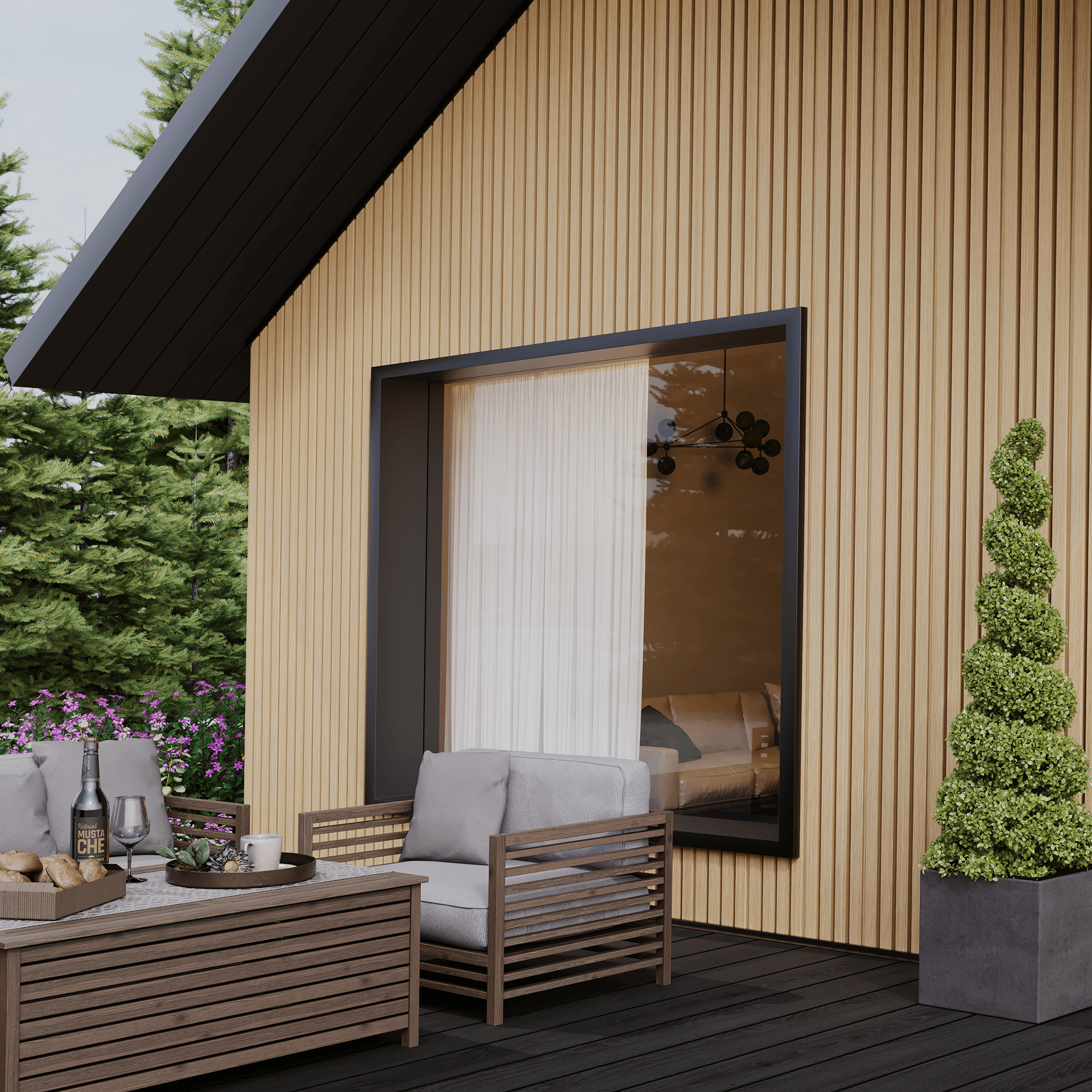
Do You Need Planning Permission for Cladding?
If you’re considering installing cladding on your home or in the garden, you’ve probably asked the question, ‘Do you need
Products in Stock
Lowest Prices
Express Delivery
10-Year Warranty
January Sale. Up To 15% Off.
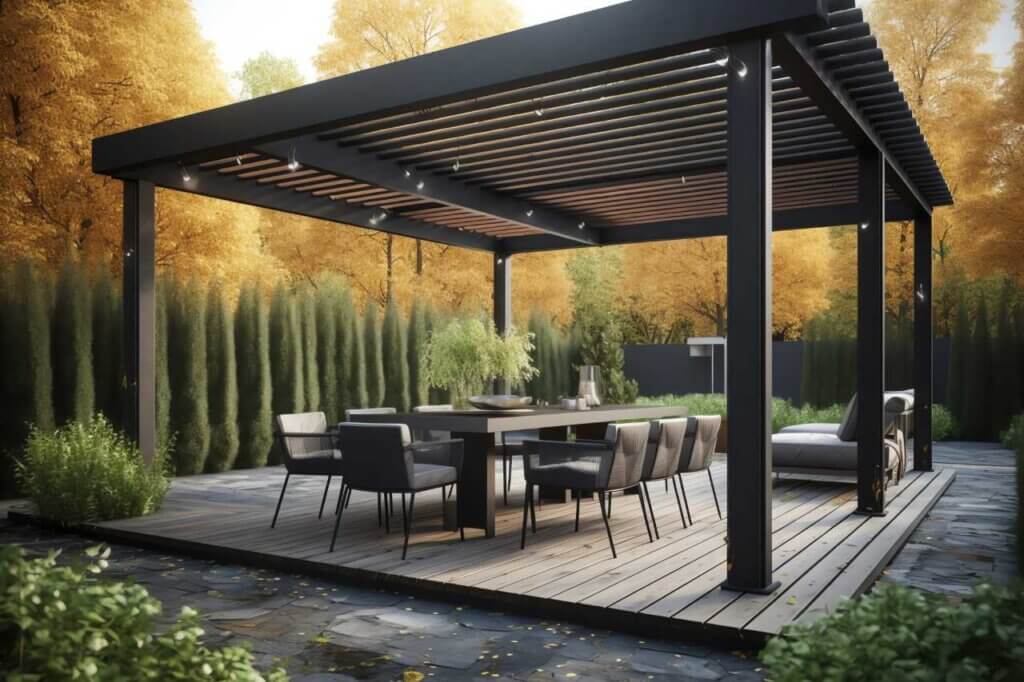
Building a ground level deck is one of the easiest ways to transform your outdoor space into something functional and inviting. Whether it’s a spot for hosting summer barbecues or a quiet place to unwind, a well-built ground level deck can be a real asset to your home.So if you’ve been thinking about taking on this project, we’ve got you covered. Here’s a straightforward guide to help you build a ground level deck that not only looks great but lasts for years.
A ground level deck, as the name suggests, is a deck that sits close to the ground, typically no more than a few inches off the surface. It’s a popular choice for homes with flat outdoor spaces or areas that don’t require an elevated structure. These decks are simpler to construct than raised decks, and because they don’t require railings or stairs, they’re a practical option for families or anyone looking to minimise costs.
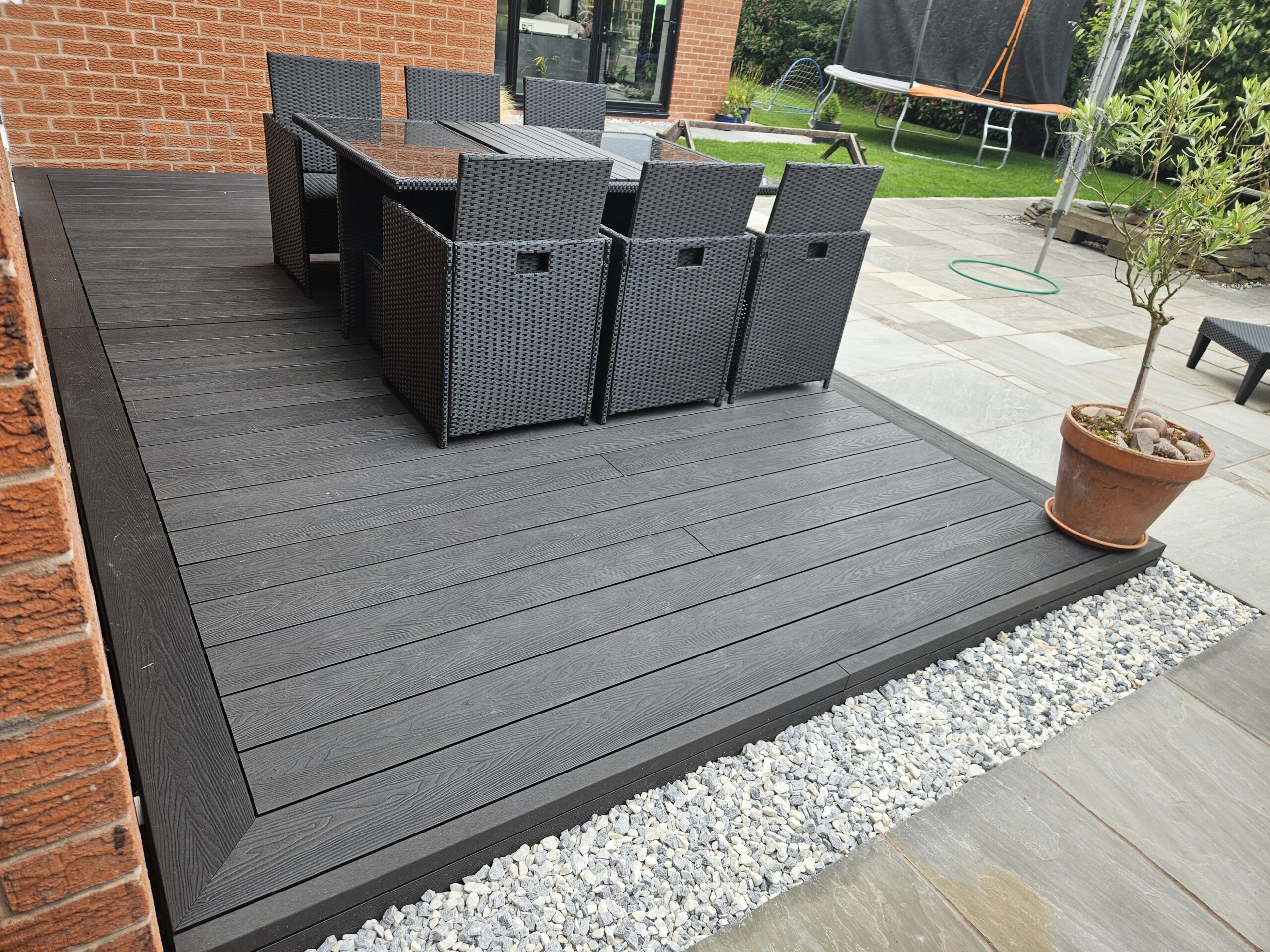
Ground level decks are an excellent way to expand your living space without a full-scale construction project. They’re versatile, easy to maintain, and can be tailored to fit almost any garden design.
Another reason to opt for this style is its accessibility. Unlike raised decks, there’s no need for complex framing or supports, making it a perfect choice for DIY enthusiasts. And if you’re weighing up wood options, remember to consider all the factors before purchasing. If you favour cost-effectiveness, sustainability, and long lifespan, composite decking is a perfect option. Not only is it durable and low-maintenance, but companies like ours also offer free samples to help you visualise your project.
Before getting started, you’ll want to ensure you’ve got everything on hand. Here’s what you’ll need:
Whilst traditional wood has a charming aesthetic, it can be expensive and difficult to work with as well as being susceptible to wear and tear, costing even more in the long-run. Composite decking boards however, are highly recommended for their long-lasting qualities, affordability, and ease of installation, with most composite decking boards having grooves that slot together easily, meaning no nails are needed. Familiarising yourself with decking wood types will help you decide the best option for your ground level deck.
Before you do anything, you might need to consider whether you need planning permission to build your deck. After the red tape is sorted, start by deciding on the size, shape, and location of your ground level deck. Think about how it will complement your garden layout and consider factors like sunlight and proximity to your house. You’ll also want to decide where to place your deck to make the most of your space.
We would recommend drawing a detailed plan that includes dimensions and any additional features, such as built-in seating or planters before you start any work. That way you can iron out any wrinkles before you’ve dug up your garden.
Now you’re ready to start, measure out the area you want for your ground level deck and mark it with pegs (a builder’s line or any other string can help visualise the boundaries too). Then, clear the area of any grass, plants, or debris and make sure the ground is level. Lay down weed membrane to prevent weed growth, and spread a layer of gravel for drainage. Read our guide on how to lay weed membrane for more information.
Before committing to building the ground level deck frame we would recommend doing a dry run first – that means just laying it down without fixing it to see if it all fits correctly. Once you’re happy with it, you can start building. Construct a sturdy frame using joists. Lay the outer frame first, ensuring it’s square and level. Then add the joists at regular intervals to support the decking boards. Make sure you have good decking frame spacing to keep a good level of structural integrity and use treated timber or composite materials to avoid issues with rotting or warping.
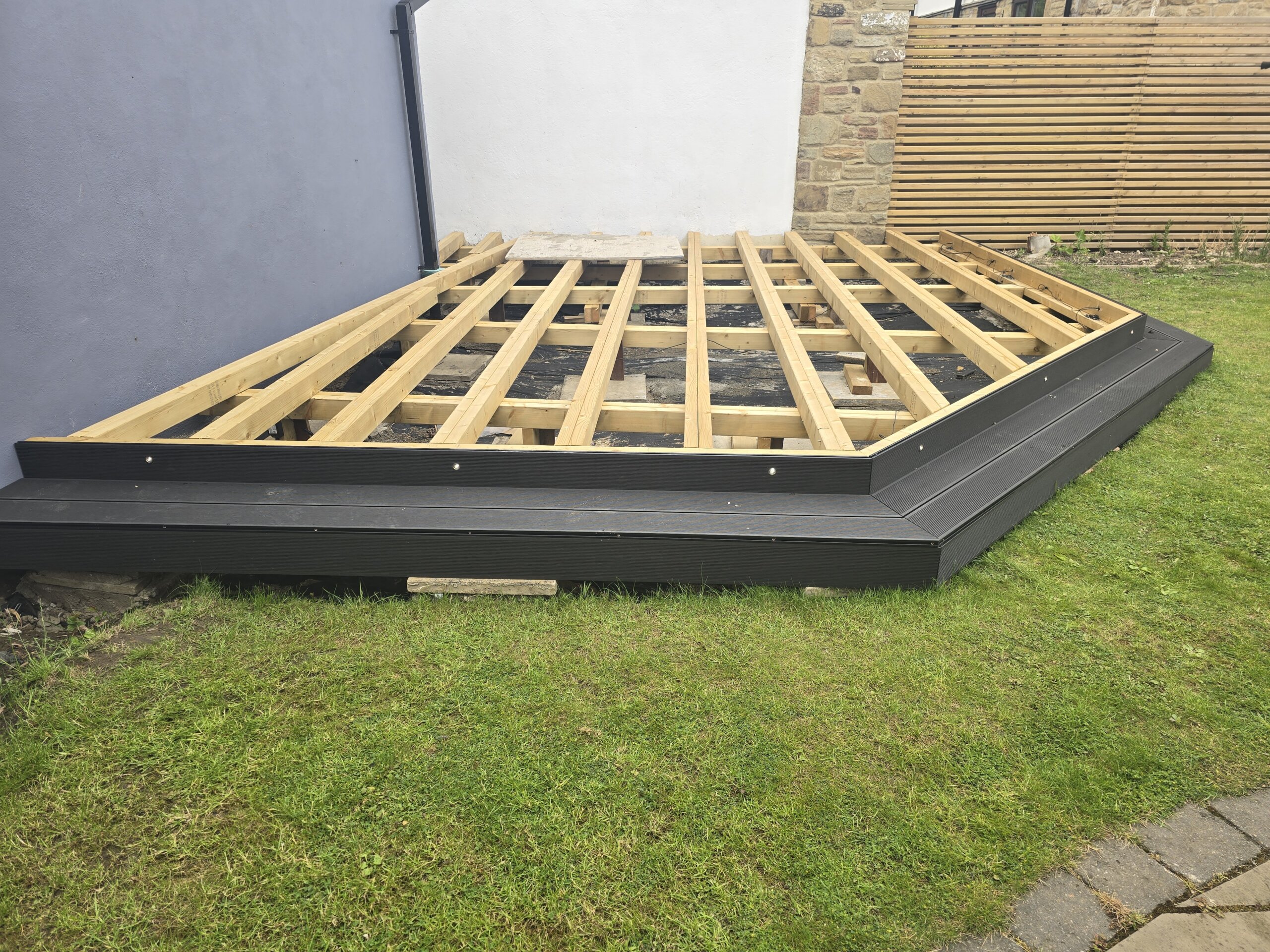
Lay your decking boards across the frame, leaving a small gap between each one for drainage. Use fixing clips to secure them in place, making sure they’re evenly spaced. If you’re using composite boards, follow the manufacturer’s instructions for the best results.
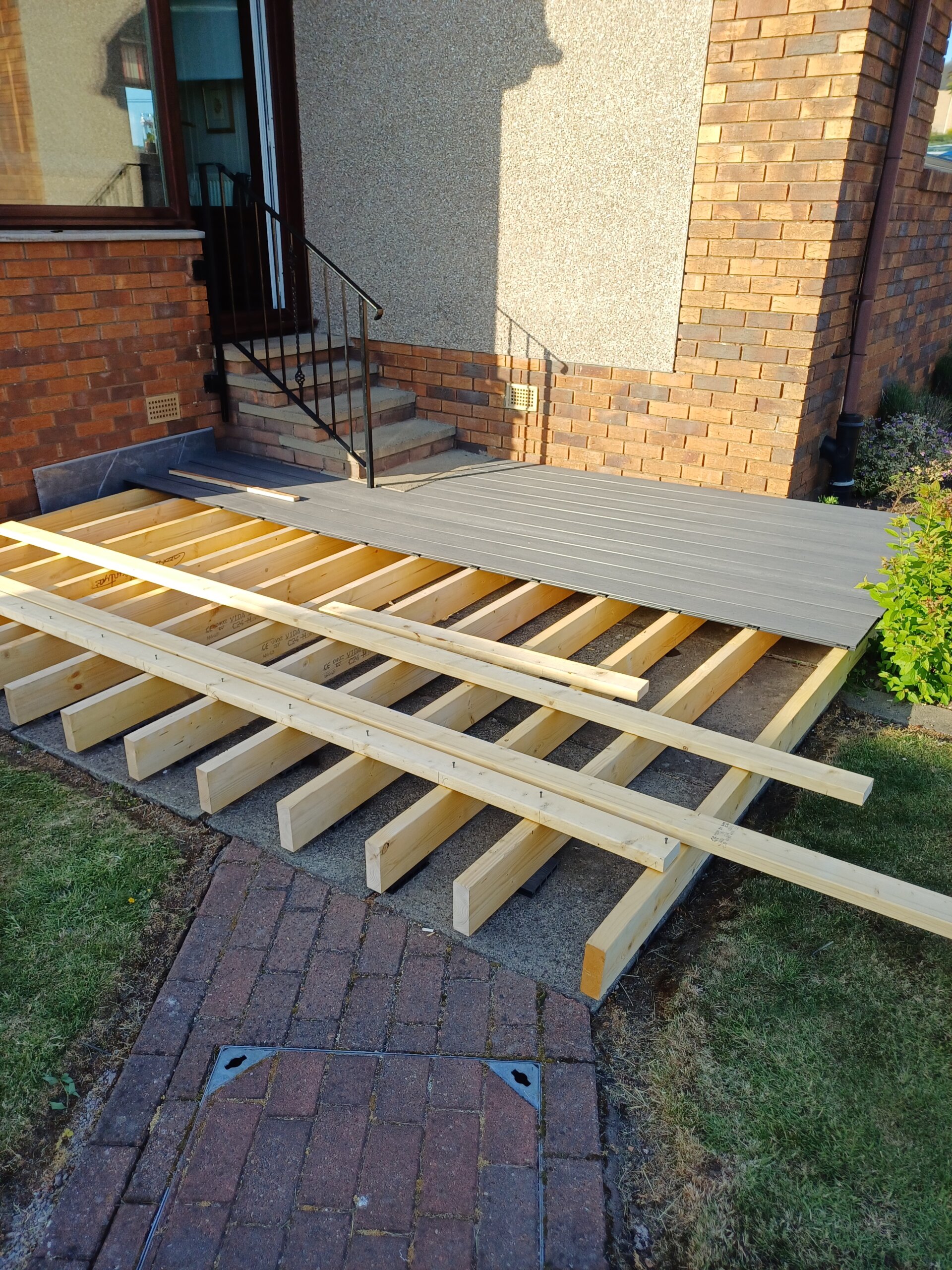
Once the boards are in place, sand any rough edges and add any additional features. It’s always good to give your garden a healthy makeover, so don’t be afraid to indulge yourself and get a decorative trim, some lighting, or furniture to make your new deck a personal paradise.
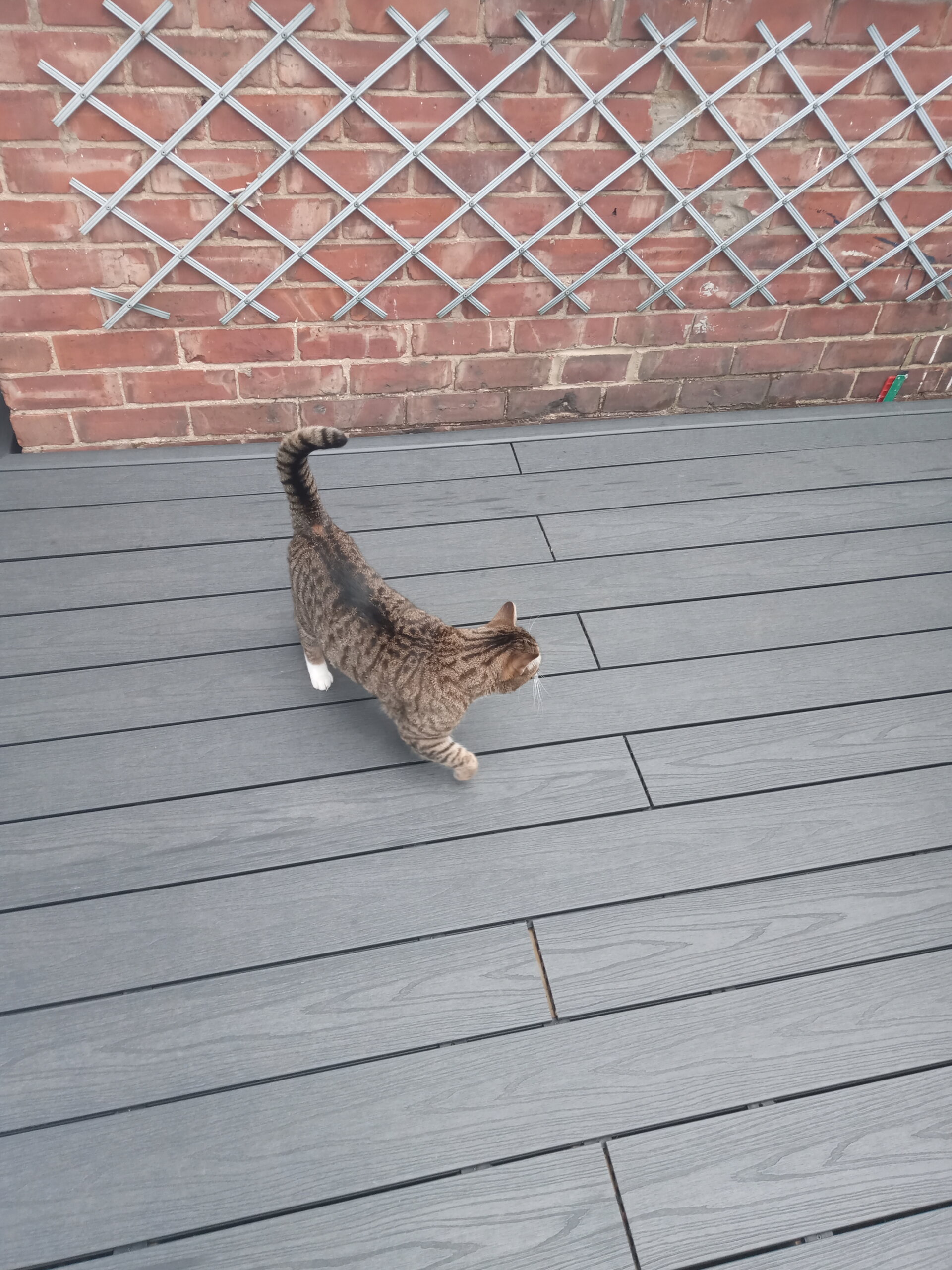
Whilst the material you use to build your ground level deck is up to you, be conscious of the durability of the wood you use. There are many different wood types to build your decking, and you should choose one you know is going to last you for a while. That’s why we recommend composite decking for its low maintenance, durability, and affordability. It doesn’t warp, splinter, or require regular sealing, unlike traditional wood and with our 10-year warranty, you can be assured of a quality ground level deck that will hold up for years.
Poor drainage is one of the quickest ways to damage your deck. To avoid mould and rot, ensure there’s a slight slope away from the house and leave gaps between the boards to allow water to drain freely.
This not only aids drainage but also allows the boards to expand and contract with temperature changes, meaning they won’t splinter or strain under the pressure of changing size. This ensures less maintenance for you, and altogether less cost in the long-run.
Always check with your local council for any regulations you need to comply with before you start building. This ensures your deck is safe and up to standard and you won’t get any nasty surprises halfway through.
While composite decking requires minimal upkeep, a quick clean every now and then will keep it looking its best. Remember, darker composite decking does fade in colour after 6 months, losing 30% of the starting colour due to weathering and wear and tear, so don’t be concerned that your ground level deck is looking a little lighter.
Failing to level your ground can result in an uneven deck that’s not only unattractive but also unsafe. Always remember to properly prepare your site by marking it out, removing any plants or debris, and levelling it with a shovel to avoid future problems.
If you’re not using composite decking, untreated wood is a risk that can lead to premature decay. We would always recommend using treated wood on your ground level deck, but if you’re wondering about the differences between treated and untreated wood, we can help you out.
Neglecting drainage can cause water to pool, leading to warped boards and a soggy mess, even with the most resistant woods. Always remember to leave adequate gaps between boards to allow drainage, and try to build on a slight slope to increase water runoff.
Building an adequate base is very important. Make sure your decking frame spacing is close enough that your deck has the proper structure to handle the weight of furniture, planters, and people.
Skipping this step could result in fines or the need for costly adjustments later. Always be vigilant in checking the red tape.
Low-quality screws or nails can cause boards to come loose over time. Invest in durable fasteners designed for decking to make sure your ground level deck is sturdy and safe for years to come.
At the end of the day, building a ground level deck doesn’t have to be that complex. With the right materials, tools, and planning, you can create a stunning outdoor space that’s both functional and stylish. And long-lasting composite decking boards are always worth considering for their long-term durability and ease of maintenance. We supply a range of quality composite decking boards, with a warranty of 10 years, so you can be assured we know what we’re doing. And if you’re not sure whether you like the style, you can get our free sample pack to see if it fits with your vision.
So don’t wait! Grab your tools, make a plan, and enjoy the satisfaction of creating a ground level deck that transforms your outdoor space into your own personal paradise.
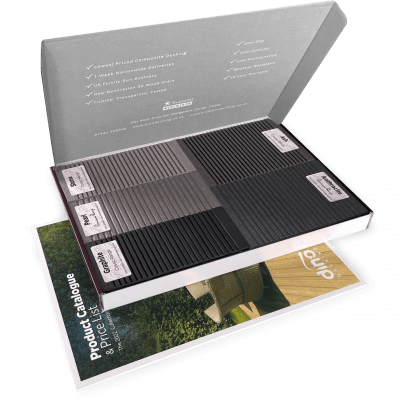
Our sample pack contains a sample piece of each colour currently available. Order your free sample pack today to compare the colours and get a true feeling of the Dino Decking range!

If you’re considering installing cladding on your home or in the garden, you’ve probably asked the question, ‘Do you need
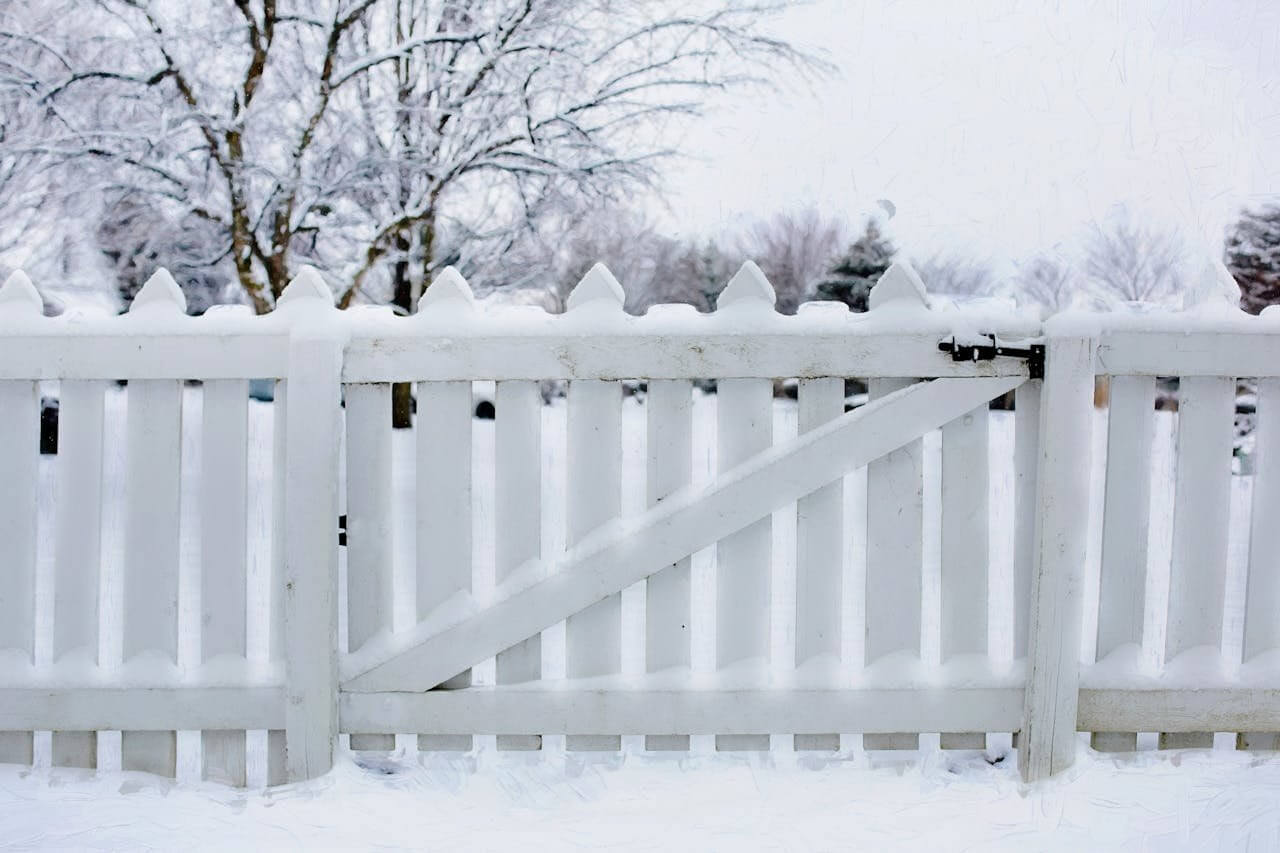
If you’re looking to go all out this festive season, you might be looking for some fantastic Christmas garden ideas